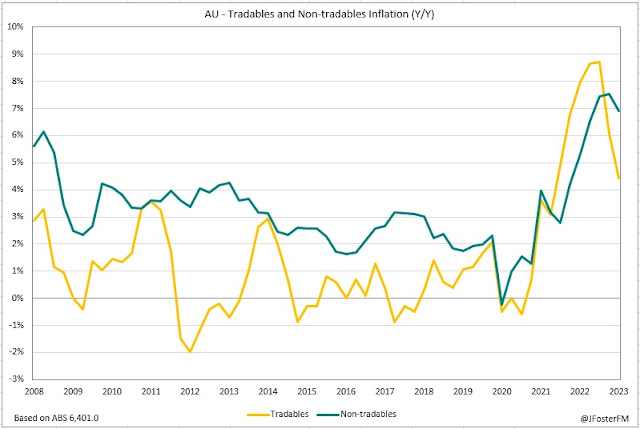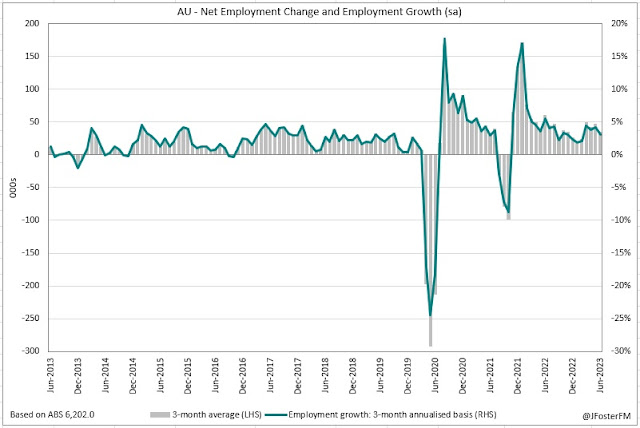New housing finance commitments declined in June but rebounded with momentum in the quarter overall. An upswing in housing prices and rising loan demand have outweighed the effect of higher interest rates in recent months.
Housing Finance — June | By the numbers
- Housing finance commitments (ex-refinancing) fell by 1% month-on-month in June to $24.6bn, partly reversing May's 5.4% gain. Commitments are down 18.2% on 12 months ago.
- Owner-occupier commitments were 2.8% lower on the month (from 5.1% in May) at $15.9bn, the level down almost 20% over the year.
- Investor commitments posted a 2.6%m/m rise to $8.7bn - following a 5.9% lift in May - but were down 15% on a year earlier.
Housing Finance — June | The details
Despite declining in June (-1%), housing finance commitments have been in an uptrend over recent months; despite rising interest rates loan demand has picked up with the value of new lending rising by 4.4% in the June quarter. Banks' loan books to both owner-occupiers (3%q/q) and investors (7.1%q/q) have seen a rebound from a period of contraction in recent quarters. An upswing in housing prices amid tight supply and rising demand for housing (reflecting strong post-pandemic population growth) has underpinned the increased value of lending. But loan volumes have also risen, with strong increases seen in the June quarter for loans written to 'upgraders' (existing home owners) (7.2%) and first home buyers (9.3%).
The chart below shows loan volumes (on a monthly basis) in the owner-occupier segment, noting that the ABS does not produce equivalent estimates of loan volumes for investors.
Construction-related loans to owner-occupiers appear to have troughed, but it is very clear from this analysis that new builds have been out of favour (reflecting cost increases, lengthy building timeframes and weak sentiment), with buyers turning to existing stock for which supply has been very low relative to historical listing volumes.
Housing Finance — June | Insights
A solid rebound in housing finance for the June quarter reflects the underlying dynamics in the housing market. Strong population growth amid tight supply has supported an upturn in housing prices, despite higher interest rates. Refinancing remains around record levels in this backdrop.
















































